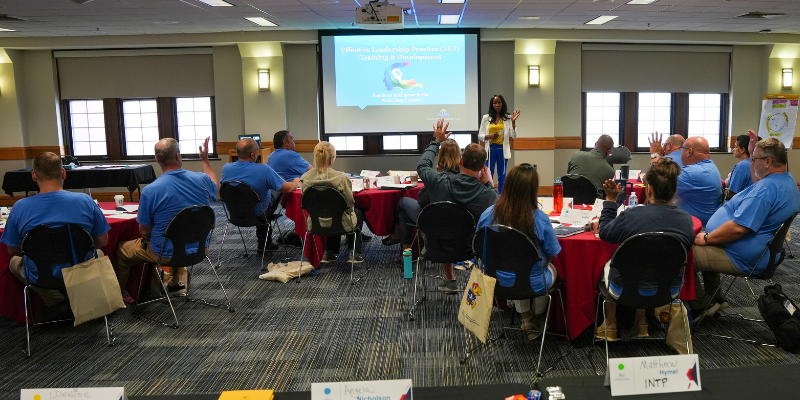The five essential functions of leadership in high-performing organizations

The five essential functions of leadership in high-performing organizations
High-performing organizations are not built by chance. They are built through intentional leadership that embraces five leadership functions that ensure sustained organizational success. These functions — strategic stakeholder value analysis, vision and values implementation, suprasystem integration, learning and renewal, and enabling and empowering — offer a comprehensive framework for building high-performance organizations.
Below, we explore each function with real-world examples to illustrate their impact.
1. Strategic Stakeholder Value Analysis (SSVA)
Leaders must identify key stakeholders, understanding their needs and expectations, and ensure the organizational strategies are aligned. This requires environmental scanning, political analysis, and market intelligence to anticipate changes and adjust accordingly.
Example: Marin County’s Race Equity Action Plan (REAP) serves as a model for SSVA in action. In order to ensure the voices of diverse stakeholders, Marin County engaged in an extensive outreach process, broadening community involvement. The leadership team widely advertised the initiative, incorporated diverse perspectives through a specific selection process, and hired an external facilitator to further build trust and credibility. These steps enabled a comprehensive, stakeholder-driven plan that demonstrates how strategic engagement builds sustainable solutions for the community.
Leadership Moment: Effective leaders don’t just manage stakeholders. They proactively engage them in meaningful conversations that lead to better solutions.
2. Vision and Values Implemented through Strategy, Structure, and Systems
A compelling vision inspires and provides direction, while shared core values guide behavior and act as a moral compass. Leaders must ensure these principles are not just aspirational, but that they translate into actionable strategies, embedded throughout the organization’s framework.
Example: Prince William County exemplifies this principle by institutionalizing its values of respect, integrity, creativity, and teamwork into its daily operations. Each value became actionable through defined behaviors, which guide decision-making and performance expectations. By aligning the organization’s structure, training programs, and the employee performance system with these values, the county created a cohesive work environment that fostered a culture of high performance.
Leadership Moment: Effective leaders move beyond defining the vision and value into operationalizing them.
3. Suprasystem Integration and Stewardship
Leaders must break down silos and create cross-functional groups to integrate organizational components to achieve the collective goal. This leadership function requires leaders to transcend silos and take a stewardship role, focusing on the collective good rather than individual departmental interests.
Example: The "Litter Crew" project is a testament to this function by redefining teamwork internally and externally. Initially, the litter collection process was seen as a routine public service. However, through integration with other departments like public works, economic development, and community outreach, the initiative expanded beyond just litter collection. The Litter Crew transitioned into ambassadors for the agency in all assets of the work. Through this integration, the litter crew helped to secure multimillion dollar business for the organization by actively cleaning the areas where those entities would be visiting the day before. It is powerful to see how a litter crew can become a catalyst for economic development and neighborhood revitalization.
Leadership Moment: Effective leaders can connect the dots between organizational functions and build integrated systems, rather than silos.
4. Learning, thinking, changing, and renewing
Leaders must foster a culture of continuous improvement and innovation. This involves gathering data, seeking feedback, benchmarking against best practices, fostering innovation, and ensuring organizational agility in an ever-evolving landscape.
Example: Prince William County created a “Schools of Learning” initiative offering leadership development and personal growth opportunities. The seven distinct tracks focused on leadership development, technical skills, and organizational transformation. This commitment to learning kept the organization adaptive and resilient in a rapidly changing environment.
Leadership Moment: Effective leaders see learning as an ongoing process and not as a one-time event. They build learning into the organizational framework.
5. Enabling, empowering, engaging, and energizing
Leaders remove obstacles, provide resources, motivate employees, provide necessary resources, and create an environment where employees feel empowered to take ownership of their work. Empowered employees are more engaged and energized to achieve organizational goals.
Example: The Fire and Rescue Plan Review Process illustrates how leadership driven process improvement can lead to remarkable efficiency gains. Previously, the plan review took up to 12 weeks – delaying approvals and hindering outcomes. Leadership introduced the "Sprinkler Express" and plan triage which restructured workflows and leveraged technology. These changes reduced the turnaround time from 12 weeks to just 10 days, significantly improving efficiency and effectiveness.
Leadership Moment: Empowerment is more than delegation. It is equipping teams with the right tools, at the right time, with enough autonomy to execute.
These five leadership functions form the foundation of leadership within high performance organizations. By strategically engaging stakeholders, embedding vision and values, integrating systems, promoting continuous learning, and empowering teams, leaders can drive lasting success and foster a dynamic, adaptive workplace. Leaders who adopt and refine these functions can ensure their organization remains competitive and effective in an ever-evolving landscape.